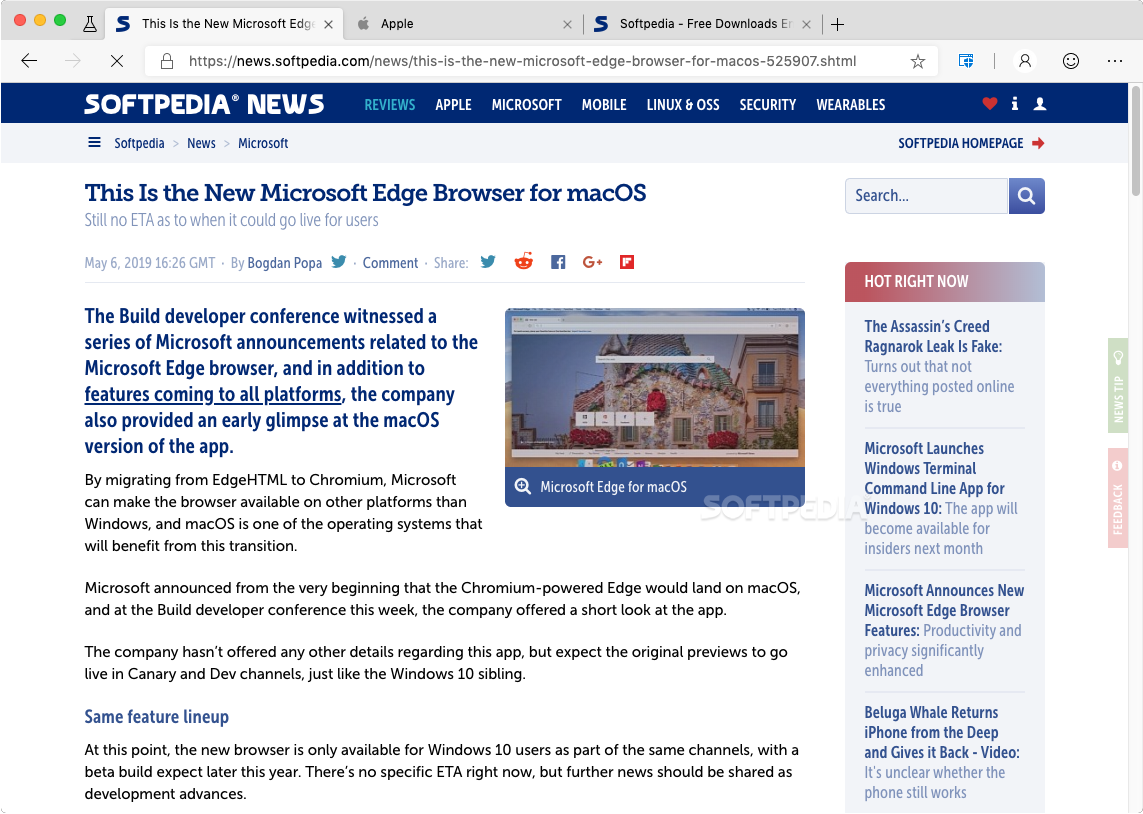
Microsoft’s new Chromium-based browser is now officially on macOS, with a brand new engine, support for Chrome extensions and a range of other improvements
While Windows users are all too familiar with Microsoft Edge, given that it’s the operating system’s default browser, Mac users have likely never tried it. Mind you, it was never all that popular, for various reasons, but by switching to Chromium and its Blink engine, Microsoft can now bring the browser to multiple platforms, including macOS.
For a long time, Edge relied on Microsoft’s proprietary EdgeHTML engine, which brought about issues for its development team, web developers and users. Recently, however, the software giant has made the switch to Chromium, opening up a range of new possibilities, including cross-platform support.
Why Edge failed to convince users before the switch to Chromium
By the time Edge was first released, Chrome had already become dominant in the browser war. Firefox was still fairly popular, but it had been around for much longer and had the advantage of being the only mainstream open-source browser.
So, at a time when the web was already built around Chromim-based browsers, Firefox and, to a lesser extent, Safari, popularizing a new browser engine was always going to be difficult. It meant more work for web developers, an additional extensions store and the inevitable compatibility issues.
For the Edge development team, it meant a lot of effort implementing new web standards, and the browser had a history of lagging behind its competition in this regard. From now on, however, these updates will always be available in the latest Chromium release, which the browser is built around.
Similar to Chrome, but with the same Edge feel
Microsoft has done its best to avoid changing the browser too much after switching to Chromium, as fans were never too critical of its UI, instead focusing on compatibility issues and missing features.
The tab design is similar that of Chrome, but corners are a bit less rounded, reflecting the design of the browser’s EdgeHTML variant. The old Edge sidebar is gone, which is certainly not a bad thing, and it has been replaced with a Chrome-like settings page.
Decent visual customization
Unfortunately, you can’t change a whole lot about Edge’s appearance for the time being. You can hide the home button and favorites bar, as well as change the default font, but not much else.
At least the dark mode, which initially could only be turned on from the edge://flags page, has now been implemented. You can select your preferred theme from the browser’s settings or sync it with the current system theme.
Extensions ahoy!
One of the greatest perks of moving to Chromium is the fact that extensions from the Chrome Web Store can now be used in Edge. Since there are far more add-ons available for Chromium-based browsers than any others, this makes Edge a much more viable option.
Microsoft still promotes its own extensions store in the browser, but you install anything from the Chrome Web Store without any issues.
So, Edge or Chrome?
If you prefer Safari or Firefox, you probably won’t be too interested in Edge. If you use Chrome or another Chromium-based browser, however, Microsoft offers an interesting alternative, though privacy-minded users might still want to avoid it.
Worth a try, and it certainly looks promising
If only for the novelty factor of running Edge on macOS, you should give the browser a chance. It signals a major change in direction from Microsoft, and even this early version seems to perform quite well, though it is far from a complete product.
Filed under
Table of Contents Download



